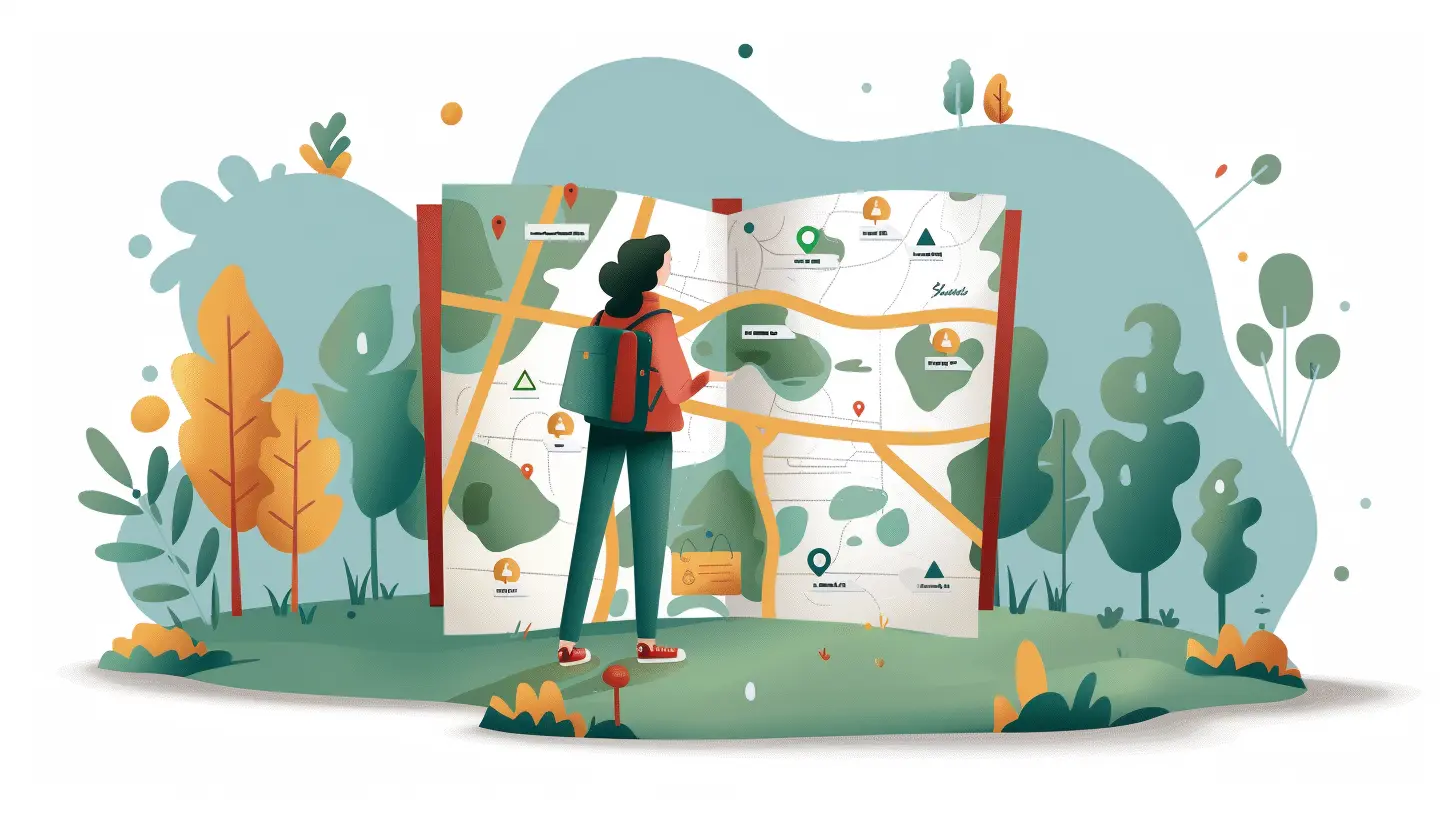Building a Project Roadmap that Works
13 August 2025
Have you ever stood at the foot of a mountain and wondered how on earth you were going to make it to the top? That’s what starting a new project can feel like. Intimidating, overwhelming, and full of uncertainty. But just like climbing a mountain, you need a solid plan—a roadmap—to guide your steps and keep you from wandering off into the weeds.
Let’s get real for a second. Most projects don't fall apart because of bad ideas. They crash and burn because there’s no clear direction. No one knows what the next step is, or worse, everyone thinks the next step is something different. That’s why building a project roadmap that works isn’t just helpful—it’s absolutely essential.
In this article, we’ll walk through how to create a roadmap that isn't just a fancy graphic you forget about in a week. We’re talking about a living, breathing guide that keeps your team aligned, your goals in focus, and your project moving forward smoothly.
What Is a Project Roadmap, Really?
Let’s break it down. A project roadmap is a high-level visual summary that maps out the vision and direction of your project. Think of it like a GPS for your team—it doesn’t get into the street-level detail (that’s for your project plan), but it does show you the milestones, key deliverables, timelines, and the general route to success.Here's the deal: it's not a to-do list. It's not a Gantt chart. And it's definitely not just a pretty slide in your kickoff deck. It’s the source of truth that guides everyone from start to finish.
Why Most Roadmaps Fail (And How You Can Avoid It)
Let’s not sugarcoat it—most project roadmaps are dead on arrival. Why? Because they’re created in isolation, they’re too vague, or they get shoved in a digital drawer and ignored.You’ve probably seen it happen. Some poor soul whips up a roadmap in a spreadsheet, slaps some dates on it, and calls it a day. Fast forward a few weeks and no one’s following it, deadlines are missed, and the team’s morale is in the tank.
To build a roadmap that actually works, you’ve got to flip the script.
Here’s what successful roadmaps have in common:
- They’re collaborative
- They’re based on real priorities, not wishful thinking
- They evolve as the project progresses
- They’re clear, visual, and easy to follow
Step 1: Start with Your “Why”
Don’t touch a tool or draw a timeline until you’ve nailed down the why behind your project.Ask yourself:
- What are we trying to accomplish?
- Who are we helping?
- How will we measure success?
Without a clear purpose, your roadmap is just decoration. When everyone understands the “why,” it becomes way easier to stay motivated and aligned, especially when the going gets tough.
🔑 Pro-tip: Write a one-sentence project mission statement and put it at the top of your roadmap. It’s your north star.
Step 2: Identify Your Stakeholders
Before you map anything out, find out who’s going to be along for the ride. Stakeholders aren’t just your clients or customers—they’re anyone impacted by the project. That includes your team, management, partners, and even end-users.Why does this matter?
Because everyone brings expectations, concerns, and needs. If you don’t involve them early, you’ll be playing catch-up later when they ask, “Wait, wasn’t this supposed to be done two weeks ago?”
👥 Tip: Create a stakeholder map with each person’s role, influence, and communication needs.
Step 3: Define Outcomes, Not Just Tasks
Let’s be honest—no one gets excited about a checklist of 300 micro-tasks. What gets people motivated? Results.Focus your roadmap on outcomes, not just actions. For example, instead of saying “Write code for feature A,” say “Launch MVP version of Feature A that solves Problem X.”
It’s a small mindset shift, but it makes a big difference.
Outcomes keep the team focused on what matters and give you a better way to measure progress. Plus, it’s way easier to adapt your roadmap when things change (and they will change).
Step 4: Break It Down Into Phases
Ever heard the phrase “How do you eat an elephant? One bite at a time”? That’s how you need to tackle your roadmap.Break your project into manageable phases or chunks like:
- Planning
- Design
- Development
- Testing
- Launch
- Review
Each phase should have key milestones and deliverables. This helps you track progress and keeps your team from feeling overwhelmed.
Visual timelines or swimlane charts work great here. A Kanban board isn’t a bad idea either if your team likes seeing things move through stages.
Step 5: Stay Realistic with Timelines
Sure, we’d all love to finish projects in record time. But over-promising is the fast track to burnout and disappointment.When you’re setting timelines, involve the people doing the work. They know how long things really take. Buffer in time for revisions, unforeseen obstacles, and testing. It’s better to underpromise and exceed expectations than the other way around.
🧠 Remember: A roadmap is a forecast, not a fortune-telling crystal ball. Be transparent about that with your stakeholders.
Step 6: Make It Visual
Humans are visual creatures. A wall of text won’t inspire anyone to take action. That’s why great project roadmaps are visual.Use color-coding, icons, and clean layouts. Tools like Trello, Asana, Monday.com, or even Miro can make your roadmap easy to digest, update, and share.
And hey—don’t be afraid to make it a little fun. A boring roadmap is an ignored roadmap.
📌 Rule of thumb: If someone can’t understand your roadmap in under 2 minutes, it’s too complicated.
Step 7: Communicate Early and Often
Even the best roadmap is useless if it’s hidden in a file somewhere. You’ve got to keep it visible and keep talking about it.Schedule regular check-ins to review progress and adjust the roadmap as needed. Include roadmap updates in team meetings. Use it as a talking point with stakeholders.
Think of your roadmap as your project’s heartbeat—it needs to stay active, or the whole thing flatlines.
Step 8: Build in Flexibility
Here’s a truth bomb: your roadmap is going to change.And that’s okay.
New information, shifting priorities, and unexpected challenges are all part of the game. The key is to build a roadmap that’s flexible enough to adapt without losing sight of your goals.
Make it easy to update and revisit. Treat it like a living document, not a sacred scroll written in stone.
Step 9: Celebrate Small Wins
Don’t wait until the end of the project to celebrate. Every phase completed, every milestone hit—it’s all progress worth recognizing.Celebrating small wins keeps team morale high and reminds everyone that you’re moving forward. It also reinforces the value of the roadmap you worked so hard to build.
Common Roadmap Mistakes (And How to Dodge Them)
Let’s run through a few pitfalls you’ll want to avoid like the plague:- Too much detail: Your roadmap is a broad overview, not a step-by-step plan.
- Skipping stakeholder input: You’ll end up with surprises—none of them good.
- Ignoring it after kickoff: Update it as the project evolves.
- Setting rigid deadlines: Stay flexible and realistic.
- Using confusing tools: Stick with tools your team actually enjoys using.
Tools That Can Make Roadmapping Easier
You don’t need a PhD in Project Management to build a great roadmap. Here are a few tools that can help:- Trello – Super visual and great for agile teams.
- Asana – Perfect for timelines and project dependencies.
- Miro – Awesome for mind maps and collaborative planning.
- ClickUp – Combines docs with tasks and timelines.
- Lucidchart – Ideal for flowcharts and roadmaps.
Choose the one that fits your style and team dynamic. Don’t overcomplicate it—just get started.
Wrapping It Up: Your Roadmap Is Your Compass
Think of your project roadmap as your project’s compass. It doesn’t micromanage every single step, but it tells you which direction to head in.When done right, a roadmap gives clarity, builds trust, keeps everyone aligned, and motivates your team to keep pushing forward. It turns that mountain of a project into a series of manageable hills—and before you know it, you’re at the top, high-fiving your team and planning the next big adventure.
So stop winging it. Grab your team, define your goals, and build a roadmap that actually works. Because direction—not speed—is what truly gets you to the finish line.
Frequently Asked Questions
Q: What’s the difference between a roadmap and a project plan?
A: A roadmap is the big-picture view—a strategic overview of what needs to happen and when. A project plan digs into the details—tasks, resources, who’s doing what, and when they’re doing it.Q: How often should I update my roadmap?
A: As often as your project changes. That might be weekly, bi-weekly, or after major milestones. Just don’t let it gather dust.Q: Can small teams benefit from roadmaps?
A: Absolutely. In fact, small teams may need them even more to stay focused and avoid overlapping efforts or missed steps.Q: What if I don’t hit all the milestones on time?
A: It happens. The key is to learn, adjust, and keep moving forward. Your roadmap is a guide, not a guarantee.Final Thoughts
Projects don’t succeed by accident. They succeed because someone took the time to build a roadmap that made success possible. So be that person. Be the one who provides clarity in the chaos. Set the course, rally the team, and lead the way.Let your roadmap be more than a document—make it a source of inspiration, alignment, and progress.
all images in this post were generated using AI tools
Category:
Project ManagementAuthor:

Baylor McFarlin
Discussion
rate this article
1 comments
Zorina Evans
Roadmap? More like a treasure map!
August 30, 2025 at 4:39 AM

Baylor McFarlin
I appreciate your perspective! A clear roadmap can indeed feel like uncovering hidden treasures as we navigate project challenges.


